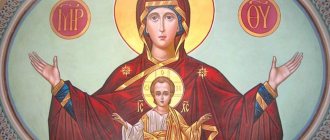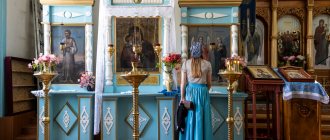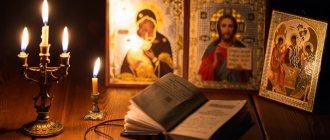When traveling, far from home, so that the connection with their native places is not interrupted, they read prayers for those who are on the road. Prayers are read by the travelers themselves or their loved ones before or during departure. Everyone knows that it is on the road that all sorts of incidents happen, problems arise, and it is so important to take care in advance of God’s presence in your life at this time.
It is better, of course, to visit the temple and attend the service. If it is not possible, read prayers at home in front of the icons.
The importance of prayer before traveling
In the modern world, people often travel (business and personal) to other cities and countries. Many people have a question: is this a journey and do they need prayer for those traveling? In Orthodoxy, a custom has developed to take a blessing from your confessor or the priest of the temple. This is due to the fact that any journey can be accompanied by difficulties and dangers.
Historically, there has been a tradition among Christians to pray before traveling themselves and to ask for prayers from their loved ones. Believing Christians setting out on the journey were sure that they would pray to God for them. Therefore, nothing bad will happen to them. Nowadays, any journey, regardless of distance, is no less dangerous.
Air travel
Elder Paisiy Svyatogorets (1924-1994) once gave the following advice to a pilgrim on Holy Mount Athos:
“Cling to God like a child grabs his father’s neck, hug Him and don’t let go, so that He cannot push you away from Himself. Then you will feel secure and strong.”
This is the whole point of the need to perform prayer. After all, this is communication with the Lord, giving confidence in the Providence of God.
TEMPLE OF THE HOLY DUCHESS OLGA IN OSTANKINO
We remember the appearance of the Risen Savior to Luke and Cleopas every time we read a prayer before a trip. This phenomenon occurred on the very day of the Resurrection. The disciples of Christ went to Emmaus, a village three hours north-west of Jerusalem.
Interpreters note that both disciples - Saints Luke and Cleopas - did not yet believe the joyful news of the Resurrection of the Savior. Along the way, they talked about the suffering of Christ, His crucifixion, burial and Resurrection, which their Christ-loving heart would like to believe, but which their unopened understanding was still afraid to believe (St. Philaret (Drozdov)).
And when He Himself approached them and went with them, they did not recognize Him (“their eyes were held”) - because it was displeasing to Him.
Why did the Lord arrange it this way?
Blessed Theophylact of Bulgaria writes that this was so that they themselves would tell Him their perplexities and sorrows, and, thereby opening their wound, would be ready to take the medicine. Their joy at the meeting was further increased by this delay. In addition, His sudden miraculous appearance would have made them unable to accept the instruction that He intended to teach them (St. Philaret (Drozdov)). And He also showed by this that although the same Body that suffered was resurrected, it was visible only to those whom He favored; so that they would acquire from here that great benefit, so that they would no longer be wavered by bewilderment (regarding, for example,) why He did not turn again among the people, but would reflect within themselves that His way of life after the resurrection differs far from the usual (Blessed Theophylact ( Bulgarian)).
Even though they did not yet believe in the Resurrection,
doubt did not remove them from Christ, to whom their love attracted them; and the fear of his enemies did not prevent them from confessing Him as the expected Savior to an unexpected unknown companion: we hoped that this one would deliver Israel (Luke XXIV. 21).
Saint Philaret (Drozdov)
That is, by revealing their thoughts, the disciples showed that they had not completely lost faith. They said that they believed: their Teacher is the Messiah; but now they call Him only a prophet. They also show the knowledge that someone believed in the Resurrection of the Lord, but they themselves have not yet acquired such faith. Their words for the third day now show that they are close to remembering the Lord’s prophecy about the Resurrection on the third day.
The Lord, answering them, calls them senseless and slow-hearted, that is, incapable of understanding and living feelings (A.P. Lopukhin). Talking with them, He dispels their bewilderment, confirms their faith and at the same time secretly grants them grace-filled consolation, about which they later said: was our heart not burning within us?
When they did not want to part with such an interlocutor, He entered the house with them, reclined with them at a meal, and, as those already prepared for openly miraculous communication, blessing and breaking bread, He gave them the complete joy of recognizing Him and seeing Him in the light of His resurrection. .
Saint Philaret (Drozdov)
The Lord became invisible to them when they recognized Him, because an action had already taken place that was useful and beneficial for those who saw it and for those who would hear from them about the former vision (St. Philaret (Drozdov)). And at that same hour they rushed back to Jerusalem to inform the other disciples about the truth of the Resurrection.
Quote:
When a bright tenderness visited you, when a ray of God’s grace seemed to open the face of God before you, and sacred horror, together with blissful joy, illuminated your heart; then don’t think about your feelings, but surrender to the stream of thoughts that flow into your soul, and take your deeds and life under scrutiny, like Zacchaeus when the Savior came to him, “to motivate yourself to correct your life and serve virtue.” "God! I will give half of my property to the poor, and if I have offended anyone, I will repay him fourfold” (Luke 19:8). A good feeling and spiritual delight must be consolidated in one’s soul by the feat of either fighting one’s sins or deeds of love. If those two blessed travelers on the evening after the Resurrection had limited themselves to the “burning of their hearts” when explaining the prophecies, they would not have known their Interlocutor: but they fulfilled the commandment of hospitality “and His need, saying, bow to us, for it is evening and the day has bowed down . Then only “the eyes were opened dumb and came to know Him.”
Metropolitan Anthony (Khrapovitsky)
What prayers should you read before going on a trip?
Who should we pray for those traveling and which saint should we pray to before a long journey? Before traveling, first of all, you can read the appropriate prayer to the Lord, troparion and kontakion. These prayer texts can be found in every Orthodox prayer book.
Many Christian believers ask for intercession from the Mother of God in front of Her icons. For example, the image of the Mother of God “Quick to Hear” is greatly revered - the name indicates that the Most Holy Theotokos will soon give help. The Smolensk Icon, also called the Guide, is also revered.
They pray to the holy saints of God for those traveling. Each Christian makes his own choice about which saint to pray to; this is a personal preference. In Russia, prayer for travelers is traditionally associated with St. Nicholas the Wonderworker. This is connected with the miracle of taming a sea storm when the saint went to Egypt on a ship.
It should be remembered that prayer is not a magic formula, after reading which everything will definitely be fine along the way. A prayer for travelers is just a request that gives peace of mind and confidence that everything is God’s will.
Why we need to pray for travelers
Often people are worried about an upcoming trip, afraid to fly on a plane or visit another country, but do not know that the best way to get rid of anxiety is to rely on the will of God, pray to Him and ask for His blessing. Therefore, before setting off on a journey, trip or vacation, it is customary to order a prayer service for those traveling in order to ask for God's mercy for the upcoming journey and a safe return. A prayer service for travelers is ordered not only for themselves, but also for loved ones.
Archangel Raphael - patron saint of travelers
It is also customary to turn to Archangel Raphael in prayer before traveling. One day the Lord sent him in human form to earth as an accompaniment on the journey.
Archangel Raphael is one of the seven highest angels. He, as it is written in the Book of Tobias (12:15), stands before God. Translated from Hebrew, the name Raphael means “doctor”, “God heals the soul.”
During excavations of the settlements of the ancient Essenes in Qumran (near the coast of the Dead Sea), a manuscript was found. It turned out to be a list of the considered lost Old Testament Book of Tobias. The events described in the Book date back to the 8th century BC. God sent the archangel Raphael to the virtuous Jew Tobit for healing from blindness. The archangel also accompanied his son, Tobias, on a journey to the city of Raghi (modern Iran).
That is why Archangel Raphael is considered the patron saint of travelers. In prayer to God, believers ask him to send them an angel on their way who will protect them from dangers.
Emmaus. Attractions - Israel Travel Guide
Emmaus is a village in Judea (from the 3rd to 7th centuries AD - a city), located approximately 30 km west of Jerusalem on the border between the mountains of Judea and the Ayalon valley, near the place where the road leading from Jaffa to Jerusalem , is divided into northern (via Beth Horon) and southern (via Kiryat Jearim) branches.
Today, the site of Emmaus, located at the Latrun crossroads between Jerusalem and Tel Aviv, is open to visitors.
Geographical position
The geographical location of Emmaus is described in the Jerusalem Talmud:
“From Beit Horon to the sea - one region, without regions? Rabbi Yochanan said: “There are mountains, lowlands and valleys. From Beit Horon to Emmaus there are mountains, from Emmaus to Lod there is a valley, from Lod to the sea there is a lowland.”
(Jerusalem Talmud, Sheviit 9:2)
The location of Emmaus is also evidenced by geographical maps of the Roman era: Peitinger's table, on which Emmaus is located at a distance of 28 km west of Jerusalem, and Ptolemy's map, on which this distance is 29.5 km.
These data are confirmed by the following ancient Christian witnesses: several ancient manuscripts and translations of the Gospel of Luke (in particular the Codex Sinaiticus), indicating a distance of 160 stadia between Emmaus and Jerusalem, St. Eusebius of Caesarea, anonymous pilgrim from Bordeaux, St. Jerome (108th epistle) and others.
Story
Due to its strategic location, Emmaus played an important administrative, military and economic role at certain stages of its history.
The first mention of Emmaus occurs in the 1st book of Maccabees, chapters 3-4, in the context of the wars of Judah Maccabee against the Greeks (2nd century BC).
During the Hasmonean era, Emmaus became the dominant village in the Aialon Valley region and acquired the status of a regional administrative center (center of the toparchy).
Josephus mentions Emmaus many times in his writings. He reports the destruction of Emmaus by the Romans in 4 BC. e.
Devastated by the Romans, Emmaus became a small village and is mentioned as such in the Gospel of Luke.
After the defeat of the Bar Kokhba uprising in the first half of the 2nd century. n. e., the Romans and Samaritans settled in Emmaus.
At the beginning of the 3rd century. n. e. The Christian scientist and writer of Roman origin, Julius Africanus, who corresponded with Origen, lived and worked in Emmaus. According to historians of the Byzantine era, (St. Eusebius of Caesarea, St.
Jerome, Philip of Sides, etc.
), Julius Africanus led a delegation of local residents to the Roman emperor Elagabalus, which received the status of a city (polis) for Emmaus and the name “Nicopolis”, which it bore at the end of the Roman and Byzantine eras.
During the Byzantine era, Emmaus-Nicopolis became a large city with an episcopal see.
At the site of the appearance of the risen Christ, a large church complex was built, which served as a place of pilgrimage, the ruins of which are still preserved. With the arrival of the Muslim conquerors (VII century AD.
), Emmaus received its former name, in Arabic: “Amuas”, “Imuas”, but lost its significance as a regional center.
During the era of the Crusades, the Christian presence in Emmaus was resumed, the Byzantine temple was restored, but at the same time, the memory of the appearance of Christ in Emmaus began to take place in other places of the Holy Land: Ha-Motza (6 km from Jerusalem), Qubeibe, Abu Ghosh (12 km from Jerusalem).
The Arab village of Amuas was re-identified as the biblical Emmaus and the Roman-Byzantine Nicopolis in modern times by the works of scholars (Edward Robinson 1838-1852, Guerin (M. -V.
Guérin) 1868, Clermont-Ganneau 1874, Guillemot (J. -B.
Guillemot) 1880-1887), as well as thanks to the revelation received by Blessed Mariam of Bethlehem, a local saint, a nun of the Carmelite Monastery in Bethlehem, to whom Christ himself allegedly indicated Amuas as the New Testament Emmaus in 1878.
The site of Emmaus was bought by the Carmelite Monastery from the Muslims, excavations were carried out, and the influx of pilgrims to Emmaus-Nicopolis resumed.
Identification of the village mentioned in the Gospel of Luke
Most of the ancient manuscripts of the Gospel of Luke that have reached us indicate a distance of 60 stadia (approx. 12 km) between Jerusalem and Emmaus.
At the same time, uncial manuscripts א (Codex Sinaiticus), Θ, Ν, Κ, Π, 079 and italic manuscripts 157, 265, 1079, 1604, 1219, 1223, as well as ancient translations into Latin (some Vetus Latina manuscripts (e.g. , Sangermanensis), quality manuscripts of the Vulgate (including the earliest, Fuldensis), Aramaic (Palestinian Gospel), Georgian and Armenian mention a distance of 160 stadia (c. 30 km).The 60 stadia option was chosen from from the 16th century for printed editions of the Bible.
The argument often made against the 160-stadia option is that such a distance cannot be covered round-trip in one day.
It should be remembered, however, about the principle of interpretation of ancient texts: Lectio difficilior, lectio verior: of the two versions of the text, the more difficult one should be considered authentic, for the reason that the ancient scribes of the Bible were inclined to make amendments in order to facilitate understanding of the text, and not vice versa.
It should also be pointed out that it is possible to travel from Jerusalem to Emmaus-Nicopolis and back on foot in one day, which has been confirmed by experience more than once.
Ancient Jewish sources (the books of Maccabees, Josephus, Talmud and Midrash) mention only one village called Emmaus in the Jerusalem area - Emmaus near the Aijalon Valley.
For example, in the “Jewish War” (4, 8, 1) by Josephus Flavius, Vespasian speaks of the deployment of the V Macedonian Legion in the Emmaus area.
These data were confirmed by archaeologists who discovered gravestones of soldiers of this legion in the Emmaus-Nicopolis area.
It can be confidently stated, therefore, that the village of Emmaus actually existed in the area of the Aialon Valley in the 1st century. n. e., and that Josephus has it in mind when he mentions Emmaus in his writings.
The village of Ha-Motza, located 6 km (30 stadia) from Jerusalem, is mentioned in the medieval manuscripts of the “Jewish War” by Josephus (7,6,6) under the name Ammaus, which is apparently a copyist error .
The ancient Christian tradition of the Church Fathers and pilgrims to the Holy Land of the Roman-Byzantine period unanimously recognizes Nicopolis as the Emmaus mentioned in the Gospel of Luke. (Origen (presumably), St. Eusebius of Caesarea, St. Jerome, Izyky of Jerusalem, Theophan the Confessor, Sozomen, Theodosius (“On the location of the Holy Land”), etc.
In 1878, Blessed Mariam of Bethlehem (Mariam Bavardi) had a vision of Christ, who showed her this place as the real Emmaus, as a result of which this place was redeemed from the Muslims.
Emmaus-Nicopolis has retained for centuries its ancient name “Emmaus” (“Amuas”), and over the centuries the Christian tradition of venerating this place as Emmaus, where the Risen Christ appeared, has also been preserved.
Source: //guide-israel.ru/attractions/14134-emmaus/
Prayer to the Lord for travelers
Lord Jesus Christ our God, the true and living way, who deigned to wander into Egypt with Your imaginary father Joseph and Your Most Pure Virgin Mother and traveled to Emmaus with Luke and Cleopas!
We humbly pray to You, Most Holy Master, that even now Your grace will accompany these Your servants (names) and, like Your servant Tobiah, send them a guardian angel and mentor, who would preserve and deliver them from all evil danger, from visible and invisible enemies, would instruct them to fulfill Your commandments, would accompany them in prosperity and good health, and would bring them back unharmed and calm.
And grant them to successfully fulfill their good intentions to please You and for Your glory. For it is in Your power to have mercy and save us, and we send up glory to You with Your Originless Father and with Your Most Holy, All-Good and Life-Giving Spirit, now and always and unto the ages of ages. Amen.
Prayer
Lord Jesus Christ our God, the true and living way, you willed to travel with your imaginary father Joseph and the Most Pure Virgin Mother to Egypt, and Luca and Cleopas to Emmaus! And now we humbly pray to Thee, Most Holy Master, and travel with Thy servant by Thy grace. And like Thy servant Tobiah, send a Guardian Angel and mentor, preserving and delivering them from every evil situation of visible and invisible enemies, and instructing them in the fulfillment of Thy commandments, peacefully and safely and healthily, and returning them safely and serenely; and grant them all their good intentions to please You safely and fulfill them for Your glory. It is Yours to have mercy and save us, and we send up glory to You with Your Beginning Father and with Your Most Holy and Good and Life-Giving Spirit, now and ever and unto ages of ages. Amen.
Prayer before traveling to the Most Holy Theotokos in front of the “Quick to Hear” icon
Most blessed Lady, Ever-Virgin Mother of God, who gave birth to God the Word more than any word for our salvation, and who received His grace more abundantly than all others, who appeared as a sea of Divine gifts and miracles, an ever-flowing river, pouring out goodness to all who come running to You with faith!
In honor of Your miraculous image, we pray to You, the all-generous Mother of the Humane-loving Lord: surprise us with Your rich mercies and our petitions brought to You, Quick to Hear, speed up the fulfillment of everything for the benefit of consolation and salvation for everyone. Visit, O Blessing Thy servants, with Thy grace, grant to those who are ill, healing and perfect health, to those overwhelmed by silence, to those captivated by freedom and various images of the suffering consolation.
Deliver, O All-Merciful Lady, every city and country from famine, pestilence, cowardice, flood, fire, sword and other temporary and eternal punishments, by Your maternal boldness turning away the wrath of God: and free Your servants from mental relaxation, overwhelm of passions and falls from grace, as without stumbling Having lived in all piety in this world, and in the future, eternal blessings, we will be made worthy of the grace and love for mankind of Your Son and God, to Him belongs all glory, honor and worship, together with His Beginning Father and the Most Holy Spirit, now and ever and unto the ages of ages. Amen.
Prayer to Nicholas the Wonderworker
Oh, all-holy Nicholas, exceedingly saintly servant of the Lord, our warm intercessor, and everywhere in sorrow a quick helper!
Help me, a sinner and sad person in this present life, beg the Lord God to grant me forgiveness of all my sins, which I have sinned greatly from my youth, in all my life, in deed, word, thought and all my feelings; and at the end of my soul, help me the accursed, beg the Lord God, the Creator of all creation, to deliver me from airy ordeals and eternal torment: may I always glorify the Father and the Son and the Holy Spirit, and your merciful intercession, now and ever and unto ages of ages. Amen.
Prayer to Archangel Raphael before traveling
Oh, great holy Archangel of God Raphael, received a gift from God to heal many illnesses. Oh, great Archangel of God Raphael, you are a guide, a doctor and a healer, guide me to salvation and heal all my mental and physical illnesses, and lead me to the throne of God, and implore His Mercy for my sinful soul, may the Lord forgive me and save me from all enemies and from evil people, now and ever and forever and ever. Amen.
Read us conveniently on social networks:
Tags: prayer for the road, prayer for those traveling, prayer for those traveling








